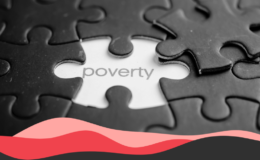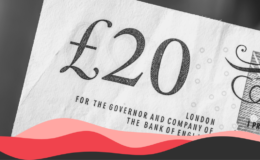- The evidence indicates that, compared with other parts of the UK, Northern Ireland’s rate of child poverty is quite low.
- Poverty has no standard definition or agreed measurement, comparisons of poverty should bear this in mind.
- However, official UK statistics along with analyses by major campaign groups indicate that child poverty in Northern Ireland is relatively low.
- By one common definition, NI has the lowest child poverty rates of any UK region.
On 3 April, in a column for the Irish Times, campaigner Emma de Souza claimed:
“Northern Ireland has the highest levels of child poverty in the UK”
There is no strict definition of poverty, so measurements of poverty and comparisons between those measurements always come with some caveats.
However, both official UK government figures and analyses by different anti-poverty organisations generally indicate that child poverty in NI is low compared with the UK as a whole.
Indeed, by one common definition, official statistics indicate that NI has lower child poverty rates than Scotland, Wales, and all of the nine English regions.
Based on all the available evidence, the claim is inaccurate.
Defining poverty
There is no single definition of poverty (as FactCheckNI has written about before). On 6 April, the House of Commons Library published a statistical factsheet looking at poverty in the UK. It that “[two] commonly used measures of poverty based on disposable income” are:
- Relative low income: This refers to people living in households with income below 60% of the median in that year.
- Absolute low income: This refers to people living in households with income below 60% of median income in a base year, usually 2010/11. This measurement is adjusted for inflation
By either definition, a child is deemed to be living in poverty if they are living in a household that is in poverty.
The paper added:
“Median income is the point at which half of households have lower income and half have higher income. Income can be measured before or after housing costs are deducted.”
Poverty is often discussed in either relative or absolute terms and, in the broadest sense, both definitions above are (despite their names) measures of relative poverty – which is usually preferred when discussing poverty in the UK (and other wealthier countries).
In general, absolute poverty focuses on extreme deprivation and tends to not be useful in richer parts of the world or places with even a basic social security system.
Official figures
The recent Commons Library factsheet looks at child poverty both before and after housing costs are taken into account.
Its assessment uses figures from the UK Department of Work and Pensions’ (DWP) latest report on households below average income (HBAI) statistics. In both cases it uses the first definition of poverty, outlined above.

Figure 1 – source: HoC library paper “Poverty in the UK: Statistics”
Before housing costs are taken into account, the figures indicate that NI child poverty rates are lower than those in Scotland and Wales, and lower than five of the nine English regions.
After considering housing costs, NI has the lowest rates of child poverty of any UK region.
These findings are similar to those from before the COVID-19 pandemic. HBAI statistics for the period to 2019-20 also indicated that Northern Ireland had lower rates of child poverty than England (cumulatively), Scotland and Wales:

Figure 2 – source: Joseph Rowntree Foundation report Poverty in Northern Ireland 2022, using stats from DWP’S HBAI figures for 2019-20.
Other assessments
The Joseph Rowntree Foundation (JRF) is an independent campaigning organisation seeking to eliminate poverty.
Its preferred definition for poverty (when discussing the UK) is relative poverty after housing costs. This is the same as the government’s measure of relative low income, after housing costs.
On 26 January, JRF published UK Poverty 2023: The essential guide to understanding poverty in the UK. Figures from that paper back up official government statistics indicating that Northern Ireland’s rates of child poverty are relatively low.
Even breaking down child poverty rates by local council area, JRF found that Northern Ireland fared quite well in general.
“Local authorities in the East Midlands, South West, South East, Scotland and Northern Ireland have child poverty rates clustered towards the lower end of the range… Three quarters of the local authorities in these regions have seen falls in child poverty rates over the last six years.”
These figures cover the period to the end of 2020-21 – i.e. one year into the pandemic – but pre-Covid assessments by the same organisation reveal similar findings.
JRF’s previous annual report, UK Poverty 2022, covered to the end of 2019-20 and found that 31% of all UK children were living in poverty, a higher rate than in any NI local authority area.
Figures from the End Child Poverty Coalition, an umbrella group for different charities and other campaigning organisations, also suggest that local child poverty is generally low, compared with other parts of the UK.
The coalition’s figures – which were published last July, and cover 2019-20 – state that 24% of NI children live in poverty, compared with 21% in Scotland, 34% in Wales and 29% in England.
A breakdown of the nine English regions is also provided. The South East and the East Midlands both have the same percentage as NI (24%), while the other seven regions are all higher. Five of the regions have child poverty rates of 30% or higher – including London at 35% and the North East at 38%.




